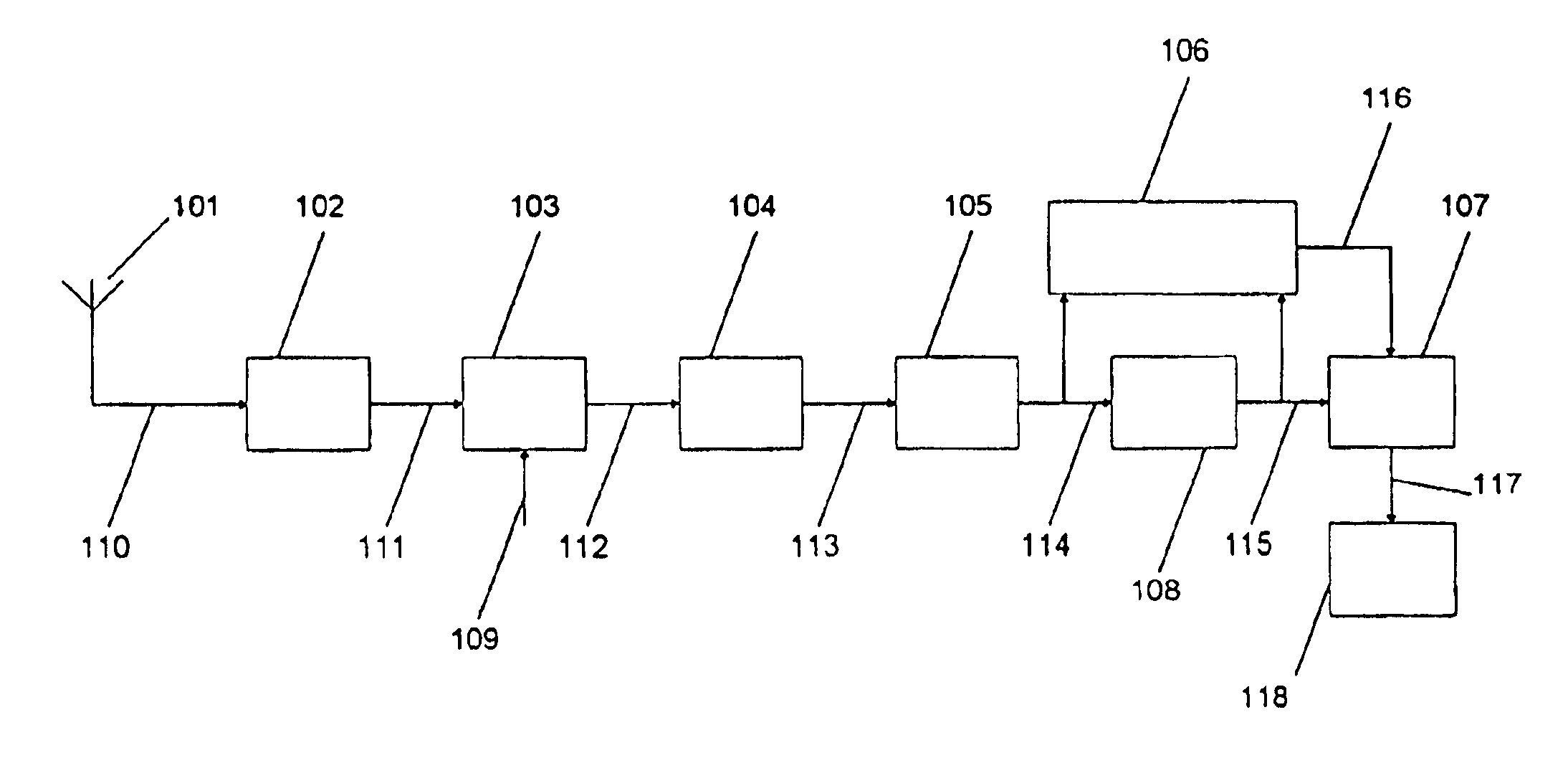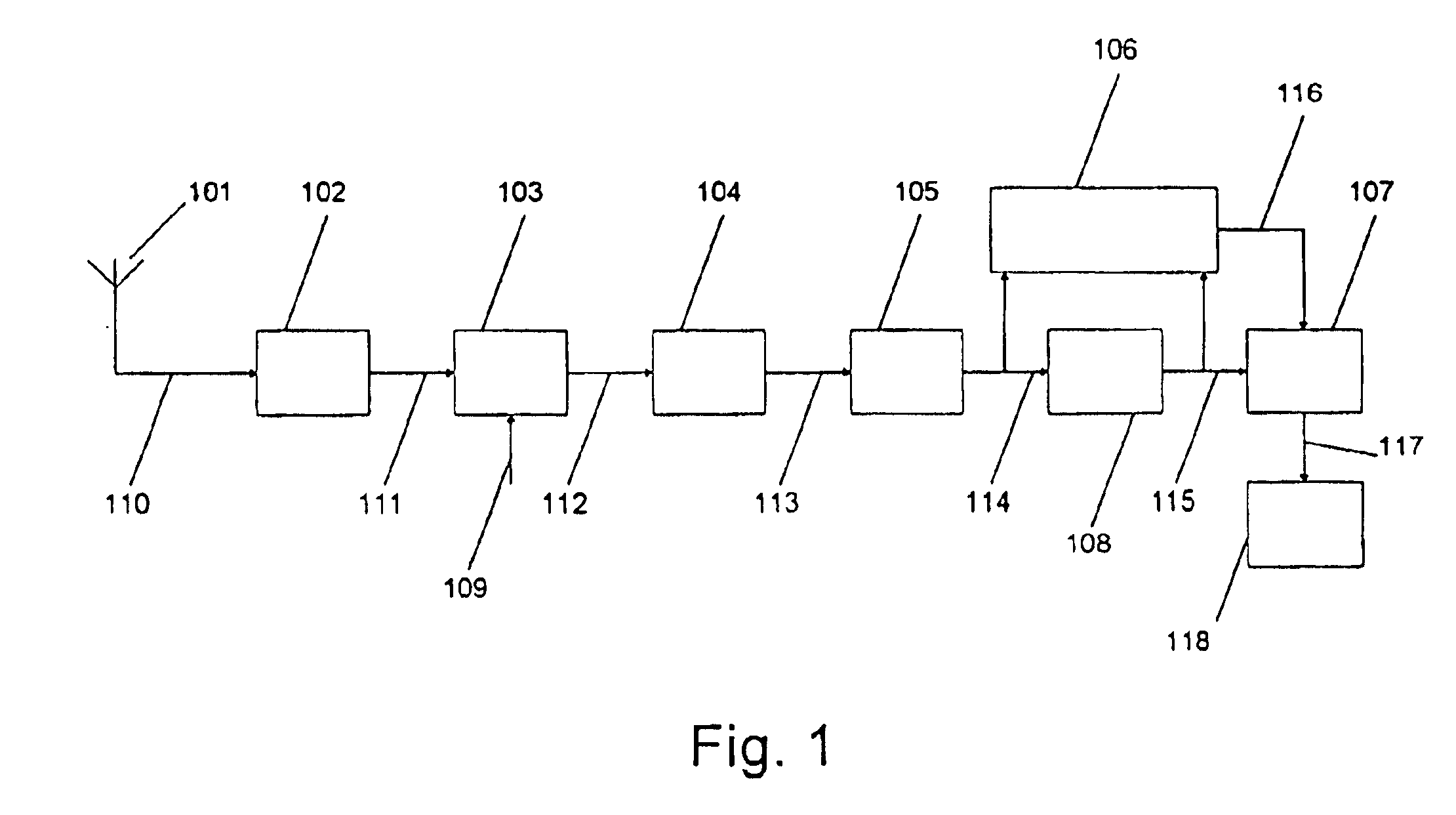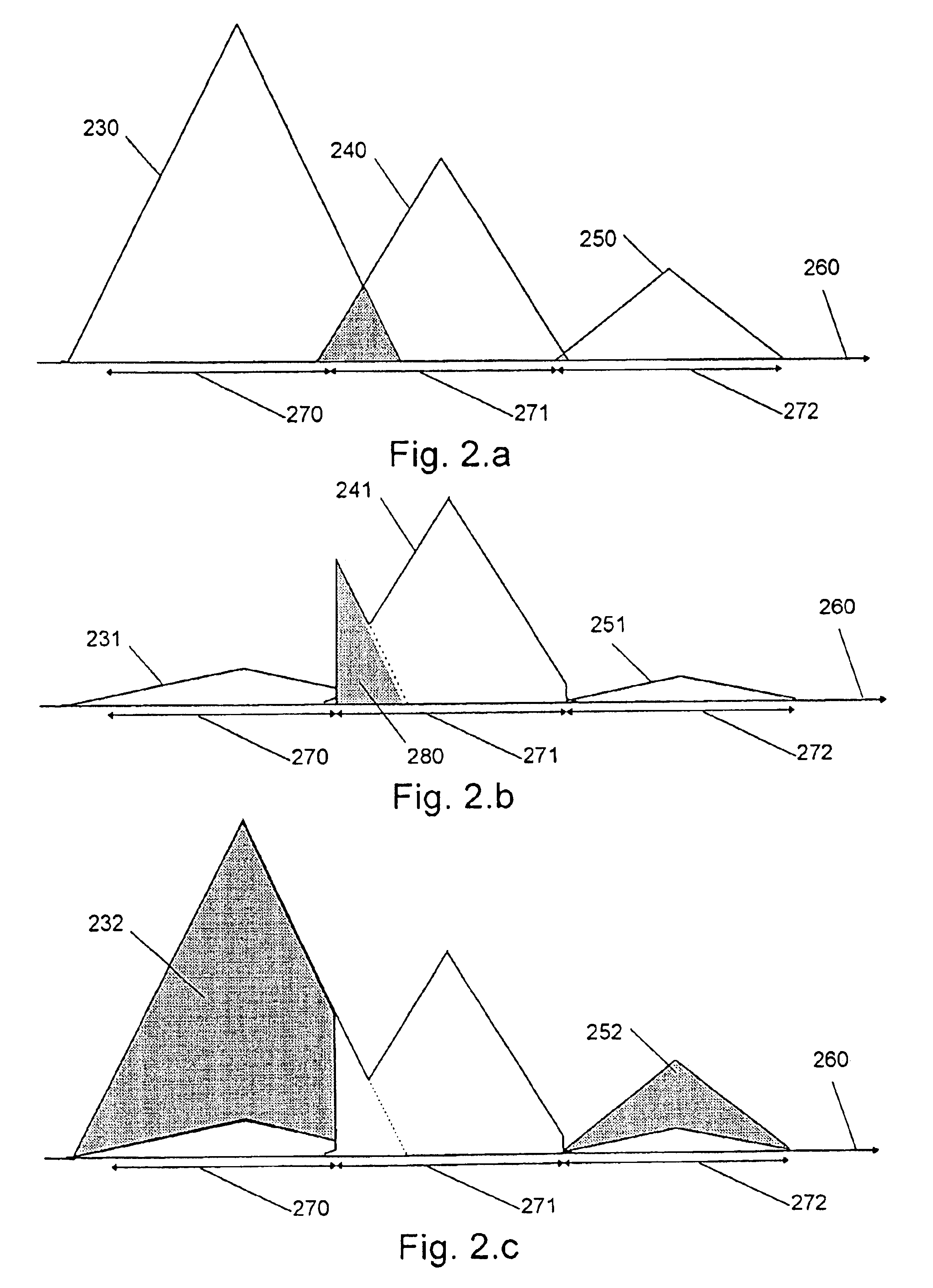Method and an apparatus for estimating residual noise in a signal and an apparatus utilizing the method
a residual noise and signal technology, applied in the field of residual noise estimation in a signal, can solve the problems of increasing delay, increasing data rate, and increasing data rate, so as to improve data rate and improve performance, the effect of reducing equipment production costs
- Summary
- Abstract
- Description
- Claims
- Application Information
AI Technical Summary
Benefits of technology
Problems solved by technology
Method used
Image
Examples
Embodiment Construction
FIG. 1 shows the front-end of a receiver for a mobile telephone of a cellular digital radio communications system according to the invention.
In FIG. 1, 101 denotes the receiver antenna (optionally used together with the transmitter part via a duplexer), and 110 denotes the received radio frequency signal. The received signal 101 is fed to an RX-band filter 102 that filters out the relevant received frequency band, delivering the signal 111 containing the frequency band allocated to the cellular system in question, e.g. the GSM frequency band around 900 MHz or the IMT-2000 frequency band allocated around 1950 MHz. The signal 111 is fed to an analogue demodulator 103 that mixes the relevant part of the frequency band down in the baseband, using a system-given channel frequency 109 for the down-conversion.
The output signal 112 from the analogue demodulator 103 is fed to an analogue filter 104 that filters out the frequencies around the relevant channel, resulting in the signal 113. The...
PUM
 Login to View More
Login to View More Abstract
Description
Claims
Application Information
 Login to View More
Login to View More - R&D
- Intellectual Property
- Life Sciences
- Materials
- Tech Scout
- Unparalleled Data Quality
- Higher Quality Content
- 60% Fewer Hallucinations
Browse by: Latest US Patents, China's latest patents, Technical Efficacy Thesaurus, Application Domain, Technology Topic, Popular Technical Reports.
© 2025 PatSnap. All rights reserved.Legal|Privacy policy|Modern Slavery Act Transparency Statement|Sitemap|About US| Contact US: help@patsnap.com



